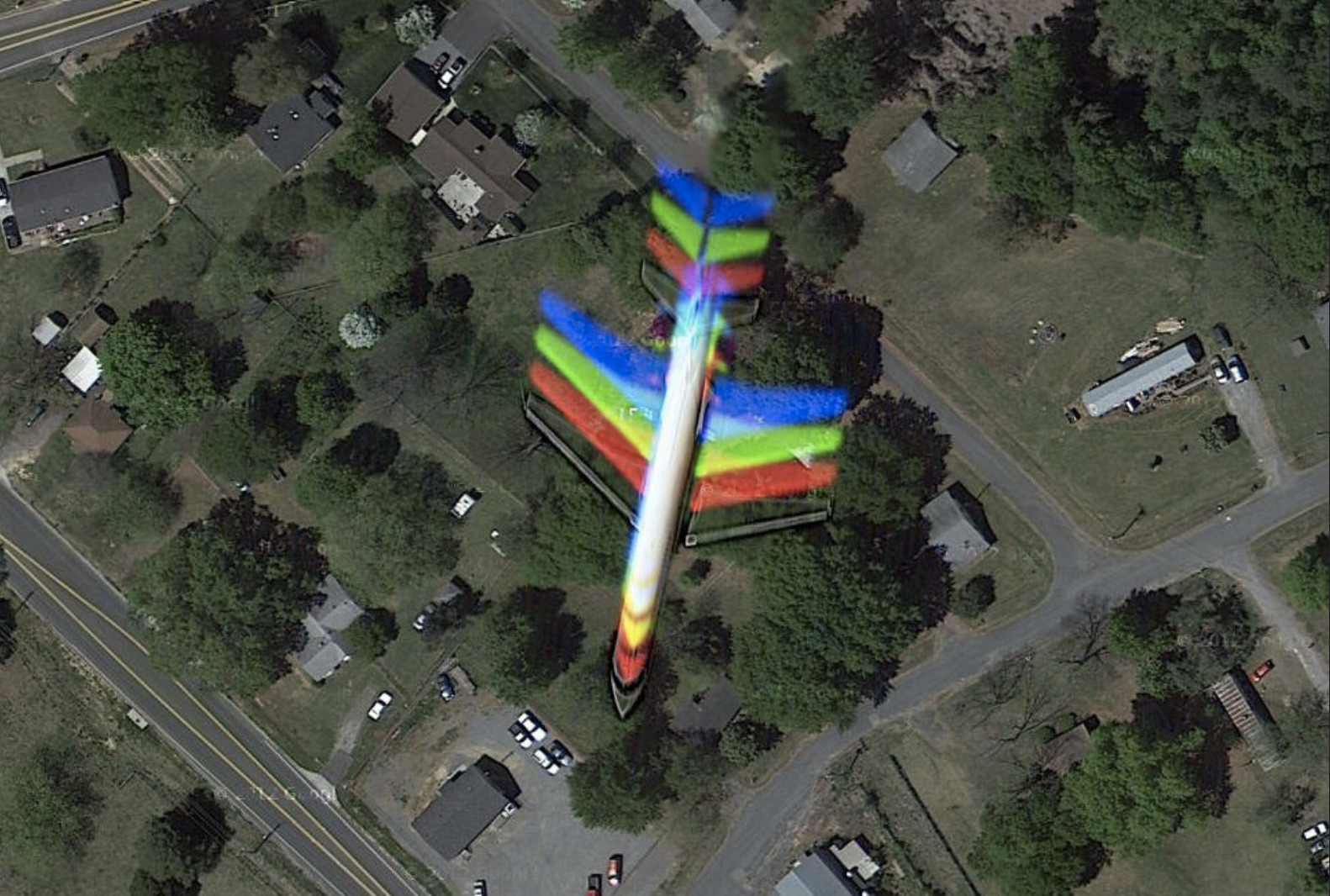
While not necessarily an example of non-human photography as described in the chapter exactly, I think these satellite photos of planes are particularly interesting. They reveal the way that the image is created from red, green, and blue bands that are layered together. Each image is taken by the satellite sequentially, so there’s a slight delay between each. For things on the ground that are relatively still, this is fine, but for fast moving objects like planes each of the frames doesn’t exactly line up. This creates a kind of rainbow shadow. It reveals something about the process that can’t be found in other forms of visible light photography. It’s only possible because of the computational process behind how the images are captured, and is in a sense a kind of a glitch, but a very nice one. Clearly, the author’s observation is correct in that the algorithmic approach intensifies the “nonhuman entanglement,” in addition to revealing something new.